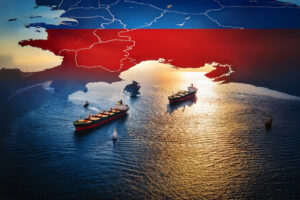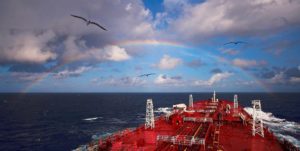Stolt Tankers considers ammonia as the maritime fuel of the future with enormous potential as a fuel, if ammonia’s sustainability credentials are validated, as it is said. However, more work is needed to demonstrate that it is equally free of ammonia, nitrogen oxides and nitrous oxide emissions, as anticipated by ammonia technology specialists.
Giorgio Guadagna, Stolt Tankers’ Business Partner – Sustainability and Decarbonisation, has taken part in a webinar on March 23, organised by the Mærsk Mc-Kinney Møller Center for Zero Carbon Shipping (MMMZCS), on ammonia as a maritime fuel of the future.
During the discussion Mr. Giorgio Guadagna covered both the advantages and potential pitfalls of ammonia. This spans everything from ammonia’s clean performance as a fuel and relative easiness to store, to the need for further testing to establish its wider emissions profile.
“Ammonia shows great potential as a maritime fuel, not least because it is carbon neutral,” said Stolt Tankers’ Business Partner Giorgio Guadagna, and added that “More work is needed to demonstrate that it is equally free of ammonia, nitrogen oxides and nitrous oxide emissions, as anticipated by ammonia technology specialists.”
“This work is crucial; while carbon emissions grab the lion’s share of attention, it is not the only challenge to overcome. For example, the global warming potential of nitrous oxide over 100 years is 265 times higher than carbon. But once ammonia’s sustainability credentials are validated, it has enormous potential as a fuel, and because most of the technology required for ships to sail on ammonia is already prepared and only requires fine-tuning, the transition can be swift.”
The webinar built on the conclusions presented in Maersk´s Mc-Kinney (MMMZCS) white paper with the title “Managing emissions from ammonia-fueled vessels”. The paper is based on results from a dedicated working group that studied potential emission scenarios for ammonia-fueled internal combustion engines and technologies that can reduce emissions to acceptable levels. As it is mentioned by Stolt Tankers “the group’s conclusions relating to emissions risks from ammonia included onboard emissions sources and the need for technologies to manage them.”
One of the most interesting findings presented in the paper relates to the need for industry-wide collaboration to support the development of this technology. By talking to different suppliers that have made progress in this area, it became clear that collaboration between different parties could result in significant optimisation of material usage and running costs.
Giorgio Guadagna said: “Stolt Tankers anticipates that there will be no one-size-fits-all solution to the energy transition. As such, we are committed to investigating any solution that holds potential for a cleaner maritime future.”



